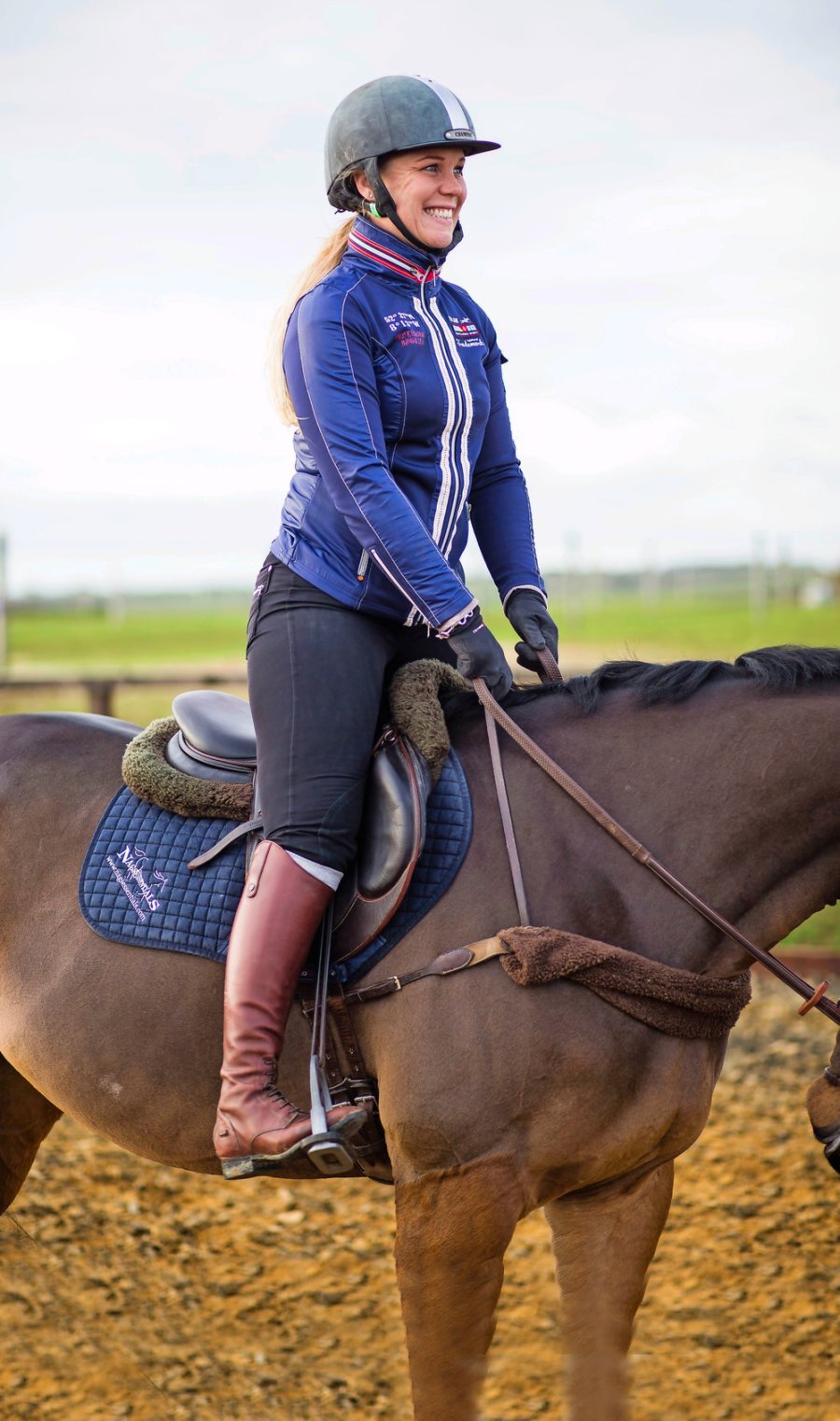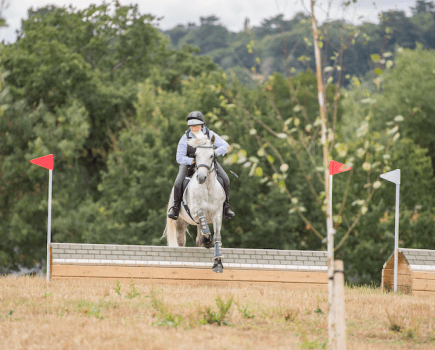Now that winter’s set in it can be easy to run out of ideas for things to do with your horse. Here, top trainer Tina Sederholm has and easy exercises to improve your riding and balance, and banish your bad habits. Make sure you’re in a safe place to try them and, most of all, have fun!
1. Stand up straight
Balance is one of the basic principles of riding, and good balance is crucial to becoming an effective rider. It’s best to start this simple exercise in halt.
How to do it
To find your own balance, stand up in your stirrups, keeping your body vertical and your legs straight. Although your knees should stay close to the saddle flap, don’t use them to grip. Allow your heels to sink down as far as they will go. Once you’ve found your balance and held the position for a few moments, gently lower your seat towards the centre of the saddle, letting your knee work down and slightly outwards. This will allow your lower leg to fit snugly around your horse. Keep your upper body vertical. It’s fine to need the assistance of some mane or a neck strap to keep your balance when standing up straight, but don’t lean on your horse’s neck. Once you gain confidence in this position, practise keeping your balance in trot and canter.
As you master this exercise, you may notice your horse’s footfalls become more even, and a horse who rushes will often slow down if you can stabilise yourself in this position. As your balance improves, so will his.
2. Legs away!
In any sport, a successful athlete needs to constantly hone their basic technique, and riding’s no exception. There are loads of exercises that can help you develop a balanced, correct and relaxed seat. ‘Legs away’ deepens your seat, frees up your legs and teaches you to engage your back. It’s fun but hard work!
How to do it
As with most exercises, it’s best to initially try ‘legs away’ in halt to get the mechanics right. Keeping your body absolutely vertical, lift both legs from the horse’s sides. Hold this position for a couple of seconds and then carefully allow your legs to return to your horse’s sides. Once you can do this in halt, try
it in walk, trot and canter, firstly for one stride, then for two or three strides.
You must use yourmuscles to move your legs away, not the momentum of your horse’s movement.
This suppling of your hip joint allows your seat to relax into the saddle, allowing you to follow your horse’s movement and use your legs in a freer way. When this exercise is done in walk, trot or canter, it tests and helps improve your balance and encourages an independent seat.
3. Sit on your hands
When your body’s working in harmony with your horse’s you can get so much more out of him because you aren’t restricting his natural movement.
One way to help him get his hind legs underneath him in canter is to follow,
and therefore encourage, his movement with your seat. If your seat comes out of the saddle for part of the canter stride, your pelvis will be bumping up and down while the horse’s pelvis is travelling forward. It won’t take long for the horse’s pelvis to fall in sync with your own, resulting in his hind legs moving in a cramped way, rather than striding underneath him. This restricts his ability to collect and extend.
How to do it
Hold your reins in one hand and place the other palm down on the saddle, beneathyour bottom. The idea is for your bottom toremain in contact with your hand throughoutthe canter stride. I prefer using my inside hand, but see what suits you.
Don’t miss the latest issue of Your Horse Magazine, jam-packed with training and veterinary advice, horse-care tips and the latest equestrian products available on shop shelves, on sale now.









